A city incredibly rich in history, Athens is filled with ancient buildings and monuments, cropping up beside modern sidewalks and presiding down from the city’s many hills. Visited by hordes of tourists year-round, not everyone knows which ruins correspond to which period of Athens’ multi-layered past – be it Ancient Greek, Roman, Byzantine, or Ottoman. As the Romans were particularly fond of marking their territory, many incredible Roman ruins in Athens are still standing today.
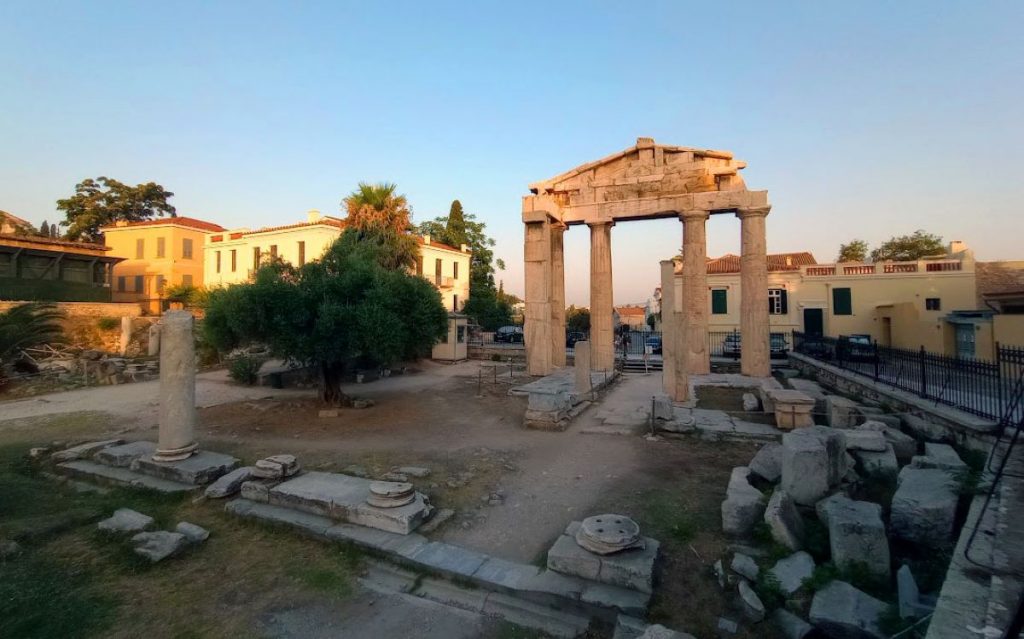
What is Greece’s Roman Era?
Most of Greece was conquered by Roman armies between 200 and 146 BC. For the next few hundred years much of Greece was under the Roman empire, and Athens under Roman administration. In Athens, the Romans set about a series of construction and reconstruction projects that altered the city forever.
The Roman empire left a distinct fingerprint on this ancient Greek city that can been seen throughout the city. We’ve gathered this list of the most striking Roman ruins in Athens for the real history buffs and curious travelers looking to get the context most tourists miss out on. For travelers who want to dig a bit deeper and get a comprehensive look at the remarkable history in the city, these Roman sites are must-sees.
Insider’s tip: When you finish learning about the fascinating Roman ruins in Athens, check out our guide to exploring Greek ruins in Athens. See if you can learn to spot the differences!
Must-see Roman Ruins in Athens
Roman Agora: An ancient shopping mall
One of the most impressive of all of the Roman ruins in Athens, the Roman Agora, or the Roman Forum of Athens, is located right in between the modern Monastiraki and Plaka neighborhoods, not far from the older Greek Agora. This area served as an ancient marketplace for traders and shoppers from all parts of the expansive Roman empire. The original buildings and structures were built with funding from Julius Caesar and his nephew Augustus, and opened with a massive Doric gateway.
Inside the site are remains of public toilets from the first century, with ancient bits of pipe and plumbing still visible. The site was expanded on for years after its original construction and also has the remains of a Byzantine church that later was built into a mosque during Ottoman rule.
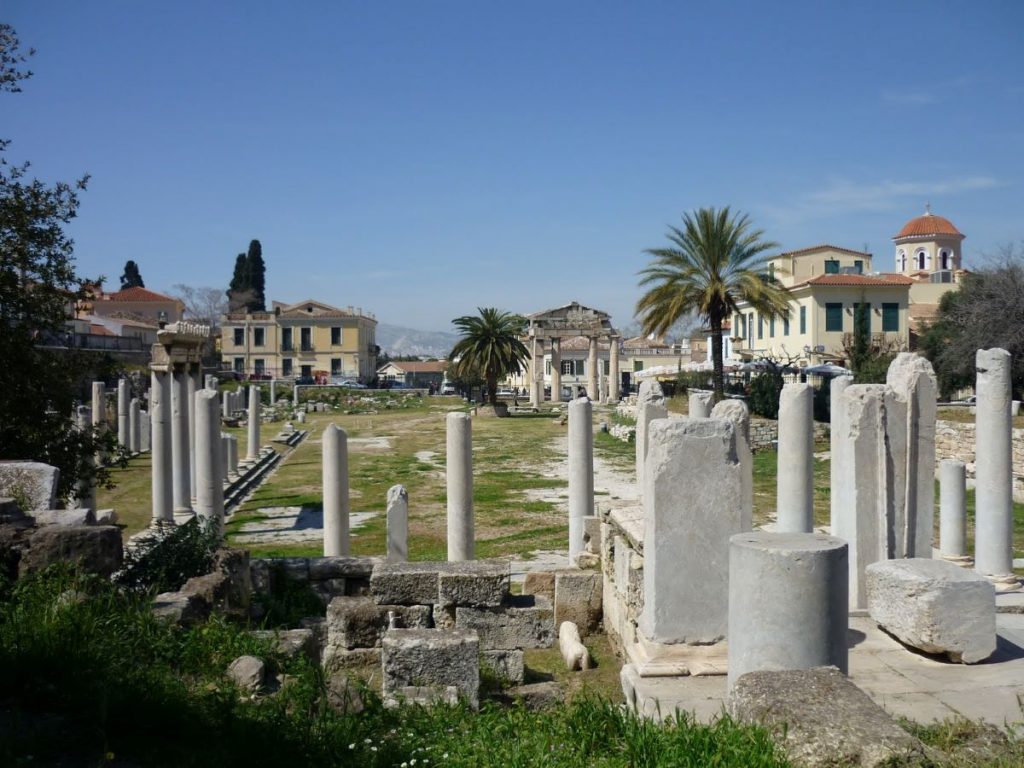
Tower of the Winds: The world’s oldest meteorological building
One of the most outstanding monuments in the Roman Agora is the Tower of the Winds, built in the 2nd century BC. This marvel of engineering is in excellent condition and gives a great insight into how technologically advanced the ancients were.
Set at the back of the site, the octagonal marble structure had sundials, a compass, a water clock, and a weather vane. The sundials originally adorned the outside of the building, and showed the hours passing, and a weather vane once stood on the building’s pinnacle. The eight sides of the tower faced the four cardinal and four ordinal directions. The inside of the building acted as the intricate water clock that kept the time on cloudy days when there was no sunlight to illuminate the sundials.
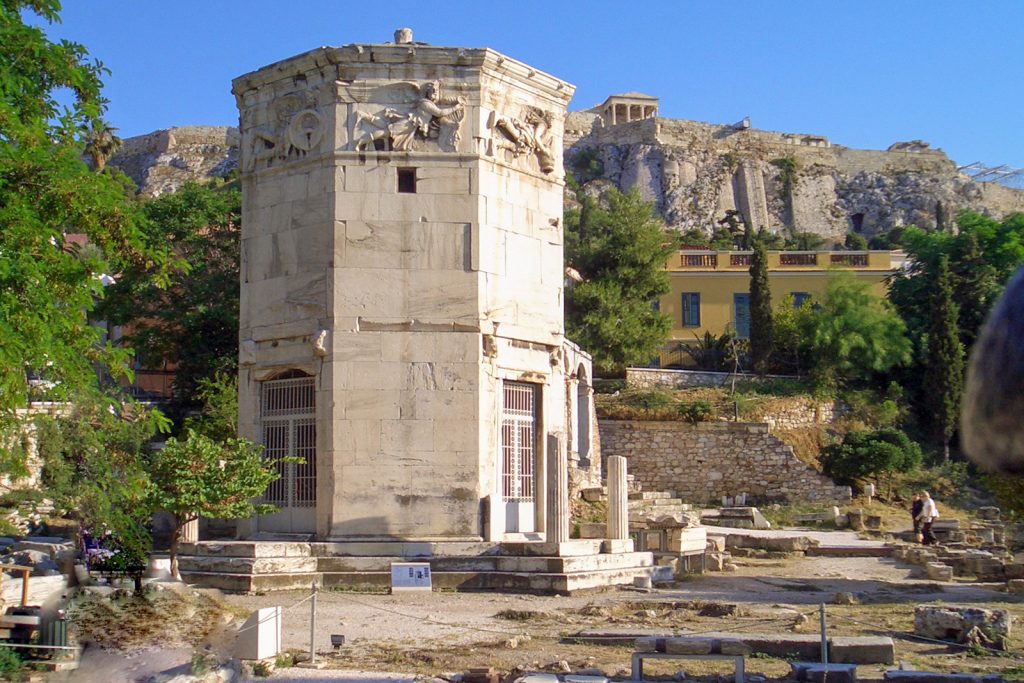
Arch of Hadrian: The entrance to Roman Athens
The monumental marble Arch of Hadrian was built by order of the Roman emperor Hadrian around 131 AD. Hadrian was a Hellenophile, or lover of Greek history and culture, and made several visits to the capital of Athens. He oversaw the construction of a new district of the city with monuments and temples which began at this majestic arch.
The Arch of Hadrian has two inscriptions: on the western side the text translates to “This is Athens, the ancient city of Theseus,” meant to delineate the more ancient part of the city. Opposite, on the eastern side of the arch the inscription reads “this is the city of Hadrian and not of Theseus,” meant to indicate the beginning of the Roman emperor’s newer sector.
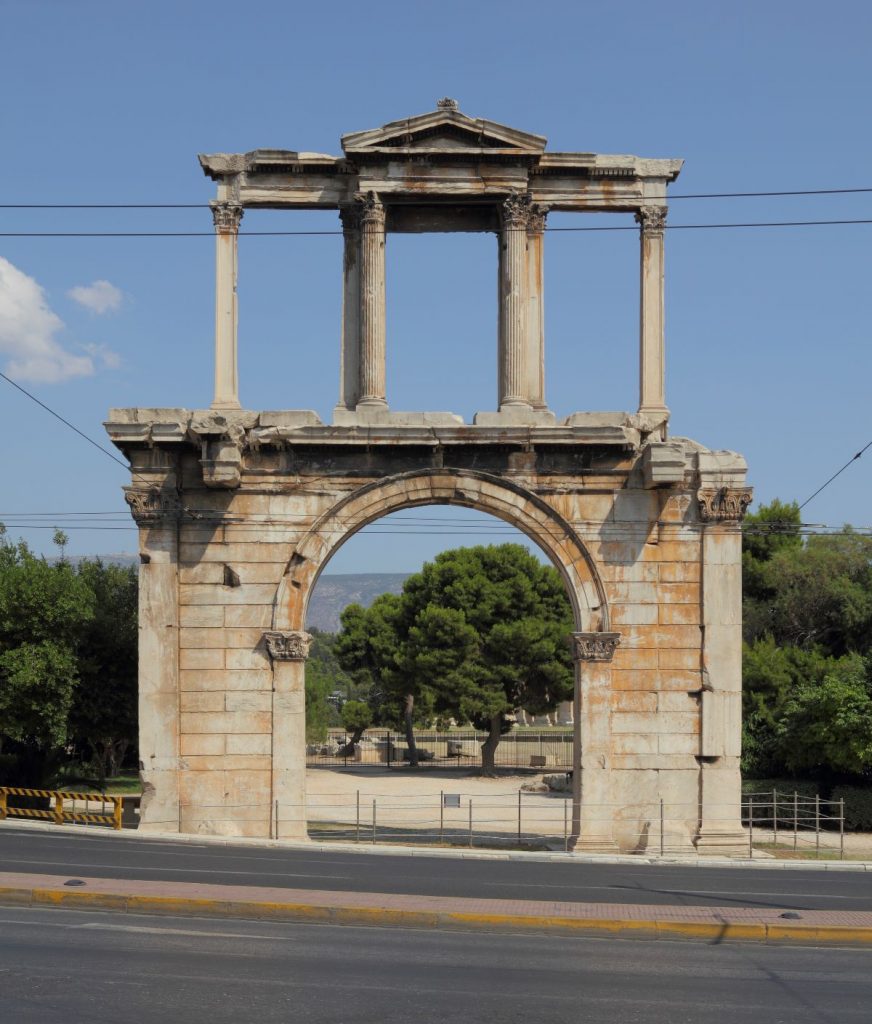
Temple of Olympian Zeus: A Testament to Ancient Grandeur
Right behind Hadrian’s Arch stand the massive columns of the Temple of Olympian Zeus. Construction of the temple was originally begun in the 6th century BC, but took hundreds of years to complete in the titanic scale needed to honor the king of the gods. The temple was finally completed by Hadrian as one of his crowning achievements around 131 BC.
In its final form, the temple was the largest on the Greek mainland (even bigger than the Parthenon!), measuring 100 meters by 50 meters, with columns reaching over 17 meters high. The columns have intricate Corinthian capitals of overlapping marbles leaves. Inside the temple were gold and ivory statues of Zeus and boldly, Hadrian himself. In later years, a wall was built around the temple and Roman baths were constructed nearby.
Of the original 104 columns, only 15 remain standing today. One more column lies nearby in colossal lego-like pieces, having collapsed from its original position in a storm in 1852, giving an idea just how complicated the construction of this temple truly was.
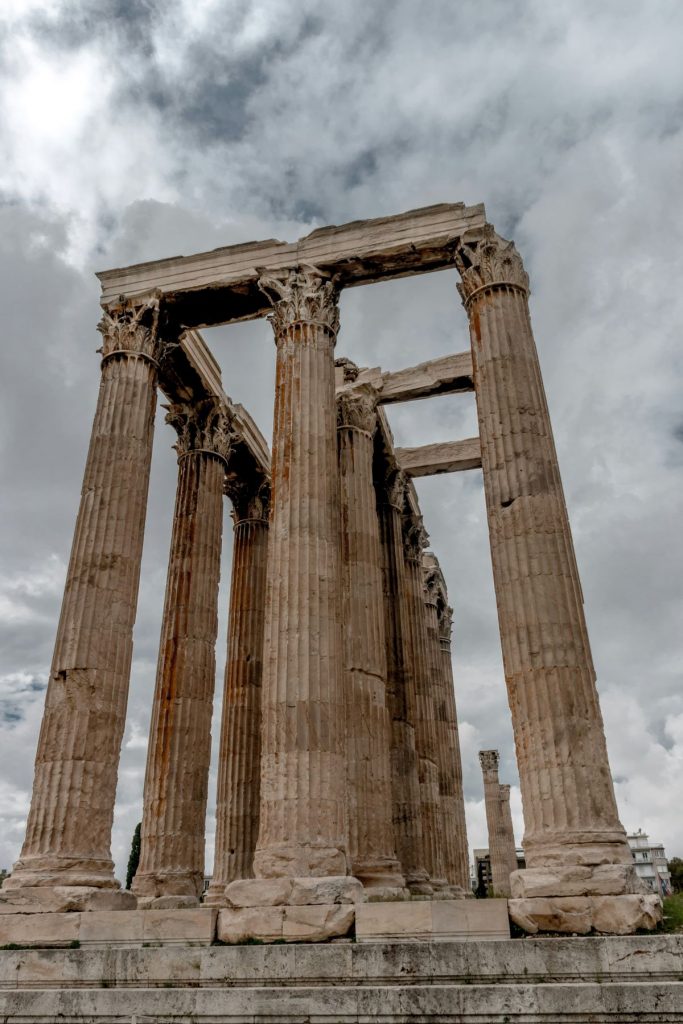
Hadrian’s Library: An ancient center of learning
Another one of emperor Hadrian’s massive construction projects, Hadrian’s Library was built around 132-134 CE. The building had both function and form–fluted Corinthian columns surrounded thick marble walls, many of which you can still see today. More columns, no longer extant, framed the library’s courtyard, and inside were reading rooms and amphitheater-like lecture halls.
In the Roman era, the building served as a center for research, an archive for thousands of texts and legal documents, and a meeting point for lectures and seminars. For years, it was the largest library in Athens. It can be hard to imagine the great library with the bit of facade that remains now, but if you enter the site you can spot small alcoves carved into the inner walls which served as shelving and storage for ancient papyrus rolls.
Traveler’s tip: Have just a few days to explore Athens? It’s a massive city with tons of landmarks to see, but it can be done. Check out our guide on How to Spend 2 days in Athens.
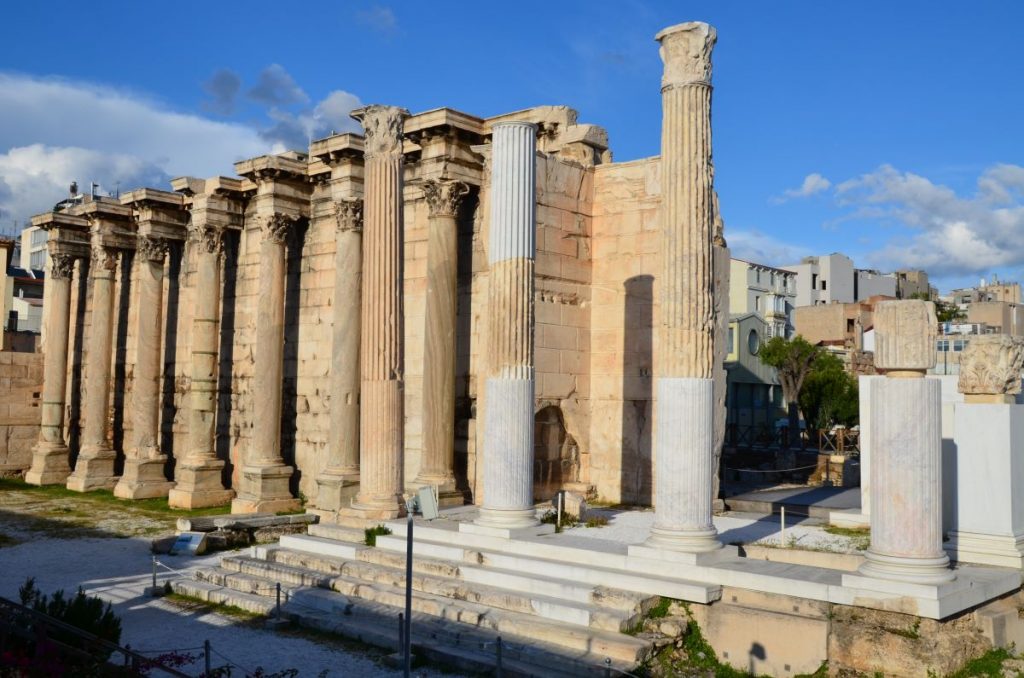
Theatre of Herodes Atticus: An awe-inspiring amphitheater
On the base of the Acropolis is the Theatre of Herodes Atticus. We like to compare this Roman theater with the nearby Greek Theatre of Dionysus to see the differences in classical Roman and Greek architectural styles. The Roman arches on the facade are particularly distinctive. This Roman theater was originally built around 160 – 174 CE by Herodes Atticus in memorial of his wife Regilla, and was restored centuries later in 1950 CE.
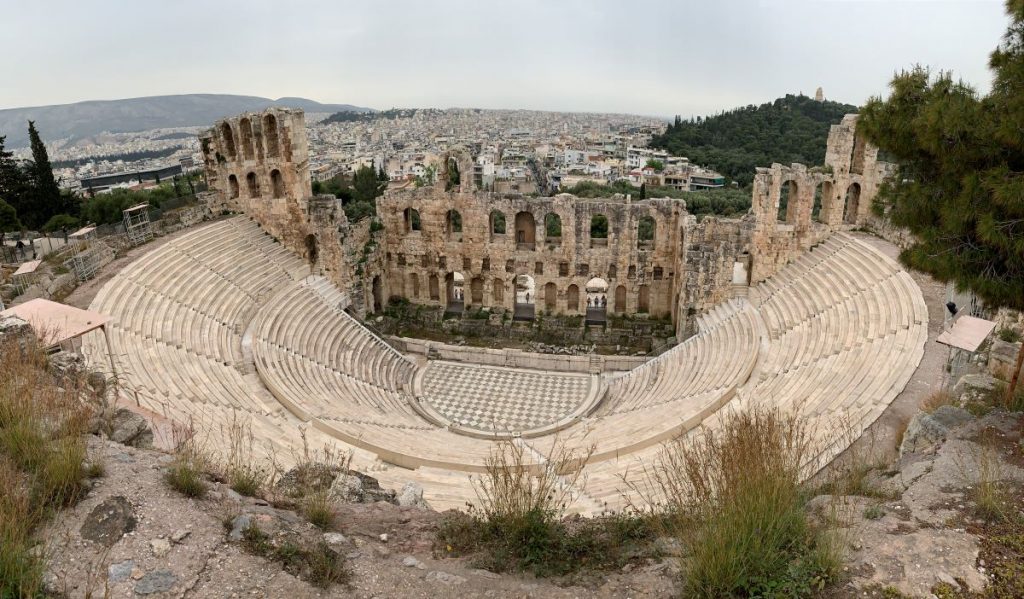
The Romans ruled over Athens for hundreds of years, leaving an indelible change on this ever-transforming city. We love being able to see this exchange of culture in the very architecture of the Roman monuments, and comparing them with all of Athens’ other incredible archaeological wonders.

